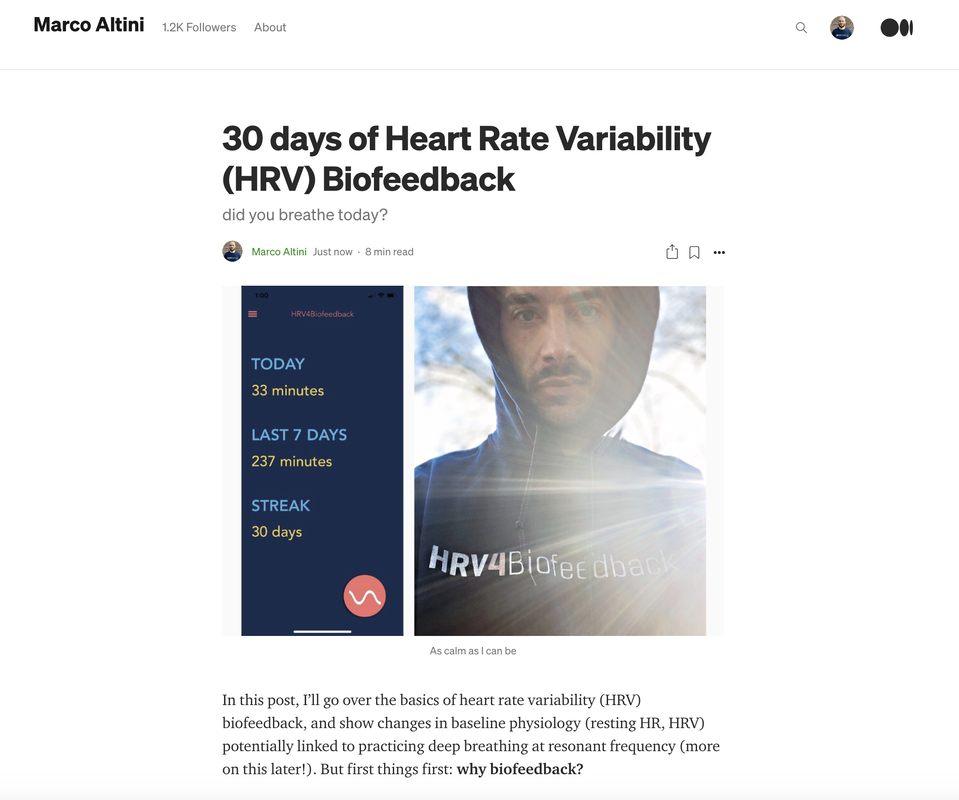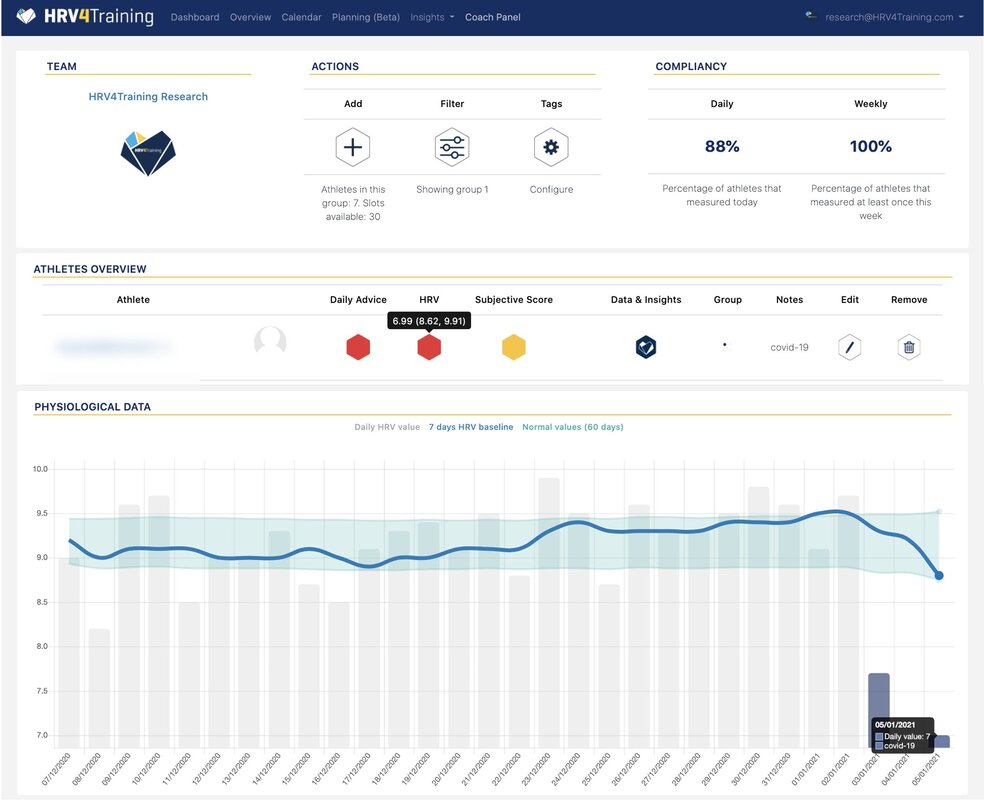|
In my latest blog post, I go over the basics of heart rate variability (HRV) biofeedback and show changes in baseline physiology (resting HR, HRV) potentially linked to practicing deep breathing at resonant frequency consistently for the past month
Learn more, here Get breathing! Grateful for another opportunity to chat about monitoring heart rate variability (HRV), the work we do HRV4Training, and what it can be used for
Thank you Ben and Sam for the chat! Episode here🎙 A few weeks ago on the HRV4Training Blog I discussed a new HRV-based approach to estimate the aerobic threshold. A new paper from Bruce Rogers and Thomas Gronwald validates the method with respect to VT1 The paper is titled: "A New Detection Method Defining the Aerobic Threshold for Endurance Exercise and Training Prescription Based on Fractal Correlation Properties of HRV" and shows some neat data (male participants only), see for example VT1 vs DFA alpha 1 in the image below You can find the full text of the paper at this link TRY IT YOURSELF1) fit file and colab code: You can try this method with your .fit file (if it includes RR intervals) by loading it in my Colab (that you can find here) 2) Use the Heart Rate Variability Logger app with a chest strap to collect data The Heart Rate Variability Logger is currently the only app able to provide DFA alpha 1 in real-time. If you try the app, make sure to configure it as follows, in Settings:
At that point, any value below 0.75 in alpha 1 as computed every 2 minutes, highlights an intensity higher than the aerobic threshold (zone 1 in a 3 zones system, or zones 1 and 2 in a 5 zones system, basically low-intensity work as typically present in polarized plans) Enjoy! Thank you to BJSM and the authors of this post for featuring our work
"using HRV4Training we can accurately monitor training-related physiological adaptations integrating internal and external load together with recovery-related variables that are key for athlete’s performance" Article here Below we report two case studies highlighting aspects of potential physiological responses to COVID infection, which hopefully can help others identifying promptly potential issues, or tracking recovery (or impaired recovery) in the long run. 1. "Long COVID" and what happens when recovery takes a lot longer. Here is an example with HRV4Training data and rMSSD still suppressed 2 months after infection 2. acute COVID infection in a pro athlete. You can see here how large is the drop with respect to their normal values, this is how data can help to identify a problem, despite lack of specificity for a condition: Take care and stay safe
|
Marco ALtiniFounder of HRV4Training, Advisor @Oura , Guest Lecturer @VUamsterdam , Editor @ieeepervasive. PhD Data Science, 2x MSc: Sport Science, Computer Science Engineering. Runner Archives
May 2023
|






 RSS Feed
RSS Feed